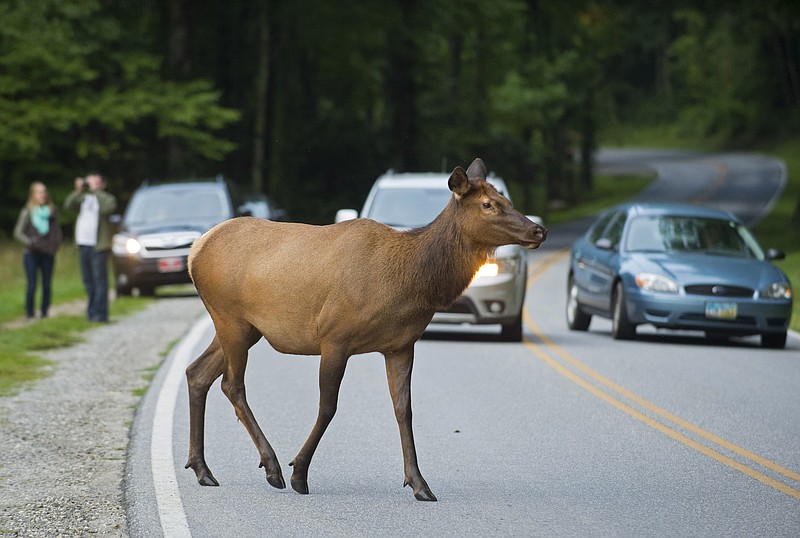No one would deny, especially on the week of its 100th anniversary, that the National Parks System is undeniably a collection of American treasures.
After all, most everybody in Southeast Tennessee, even if they've never been in more than a few states in their lifetime, has been to the Great Smoky Mountains National Park.
They've marvelled at the vistas, hiked the trails, taken the Cades Cove Loop, spotted a black bear or at least visited Gatlinburg, which sits at the edge of the park.
The sites at many of the National Parks display the varied depth, breadth and height of the country, from Everglades National Park in Florida to Rocky Mountain National Park in Colorado, from Mammoth Cave National Park in Kentucky to Grand Canyon National Park in Arizona, from Gates of the Arctic National Park in Alaska to American Samoa National Park.
From the first designated national park, Yellowstone, by President Ulysses S. Grant in 1872, to the latest, Pinnacles, redesignated by President Barack Obama in 2013, the system totals 59 parks.
But that's far from all of the sites that come under the National Parks System. Indeed, 412 sites, plus 145 related areas, live under the NPS banner.
They include, among others, 83 national monuments, 78 national historic sites, 50 national historical parks, five national rivers (not to be confused with the national wild and scenic rivers and riverways), four national parkways, three national scenic trails (not to be confused with the National Trails System sites), two national reserves (not to be confused with national preserves) and one international historic site.
Chattanooga area residents hope in a few years - once the Moccasin Bend law enforcement firing range is relocated - the system's first national archaeological district under the National Park System will become the Moccasin Bend National Park. With its 12,000 years of continuous human habitation and its Civil War history, it's certainly unique among NPS sites.
Currently, Tennessee has the one national park, but it also has two national military parks, two national historical parks, two national battlefields, two national historical trails, one national historic site, one national scenic trail, one national river and recreation area, one national parkway, one national wild and scenic river, and one national heritage area.
Sites across the nation range from ones you might expect to come under the NPS, like the home and libraries of presidents of the United States, to obscure ones such as a national memorial in Ohio to David Berger, one of the 11 Israeli athletes killed at the 1972 Olympic Games in Munich, Germany; a national heritage area in West Virginia reflecting the impact of coal on the area; and a national historic site in Idaho marking a forced relocation area of Japanese Americans during World War II.
Once these units come under the National Parks System, we want them to be safe, to be clean and to be preserved.
But every one of those NPS units, under the Department of the Interior, subsequently survives at the will of the federal government, which, you may have heard, has a sizable deficit.
As such, as of fiscal year 2015, ending Sept. 30, 2015, the 557 units have a combined deferred maintenance cost of $11.9 billion. That includes $21.2 million at the Chickamauga and Chattanooga National Military Park in Tennessee, $28.3 million at the same park in Georgia and $162.4 million at the Great Smoky Mountains National Park.
The NPS units, like most federal government programs, never go away. (Well, a handful have been reclassified from national parks to other national designations, and a couple were transferred to non-NPS control.) But unlike many federal government programs, we don't want them to go away. We consider them a part of our landscape and put them on our bucket list to visit.
National Park Service properties are maintained by direct government funding, user fees and donations.
A Congress-created National Park Foundation, for instance, allows tax-deductible contributions to be made to a general fund to be used at the foundation's discretion to support the parks.
As with the Friends of Chickamauga and Chattanooga National Military Park, many NPS units have friends of the park organizations that provide local support in the same way as the National Park Foundation does nationwide.
Increasingly, corporate and individual donations also are supporting the parks. Going forward, similar public-private partnerships are likely to be needed.
As the federal debt and deficit continue to swell with the growth of federal entitlements, less and less of the budget will be available for the likes of national park spending. So, it's not only important for the next president to seek a pro-growth (and not pro-federal spending) economy, but it's also incumbent upon Congress - which creates with legislation the designations within the NPS system - to think carefully about units it adds to the system and to creatively consider partnerships in which these treasures can be fully maintained for future generations.
